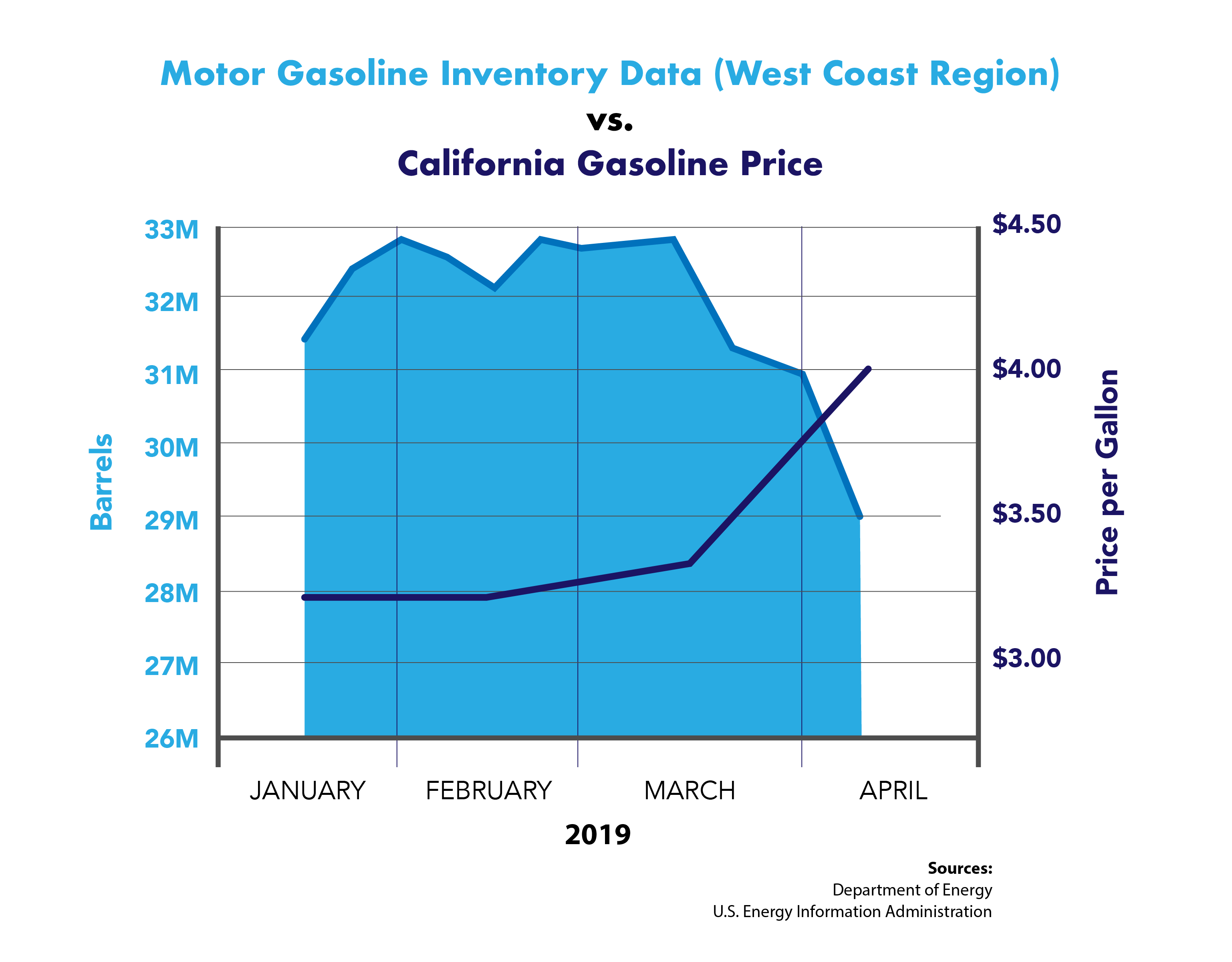This spring’s intensive flooding in the Midwest left little unscathed. From parks and roadways to farmers’ fields and livestock, the floods battered families and communities across the Midwest.
The flooding received national media attention at the onset. It’s been in the spotlight again in connection to the spike in gasoline prices in California, which have hit $4 per gallon.
A major U.S. news outlet recently claimed that the impact of the flooding resulted in a shortage of ethanol, and that was the main driver of California’s gasoline price increase.
But industry analysts instead point to statistics showing that there was not a shortage of ethanol in California and to other factors, including a dip in gasoline inventory in the West Coast region, for the price jump.
Petroleum refineries have maintenance during spring months, and those shutdowns often decrease gasoline production.
Spring is maintenance season for refiners, and 2019 is no exception, says Klay Gross, who manages the commercial ethanol activity for POET Ethanol Products as the Vice President of Ethanol Supply and Trading. Data from the Department of Energy (DOE) shows that the operating capacity of West Coast refineries declined from 90.4 percent at the beginning of March to a current run of 80.7 percent capacity. “That’s substantial,” Gross says.
Gross points to the decrease in gasoline inventory as the main reason for the increase in gas prices in California. “Supply has been decreasing, and demand was increasing as people are driving more in warmer months. As a result, gasoline stocks went from 33 to 29 million barrels in a month. That’s why the retail gas prices went up,” Gross said.
Gross also noted that, in recent discussions with West Coast refiners, they did not see any ethanol shortages during the flooding in the Midwest region. “They reported no ethanol outages in California during the Midwest-logistical-challenged time period,” he said.
The U.S. Department of Energy (DOE) reports that ethanol stockpiles in California never fell below early January levels. Any supply disruptions in localized markets because of the flooding were temporary and were not a cause for California’s price increase in gasoline, noted Growth Energy, the biofuel industry’s largest trade association.
In addition, statistics from the DOE show that ethanol remains at a significant discount to gasoline. Ethanol has maintained a substantial discount to gasoline since the beginning of 2019.
“Since February it’s been 40 cents cheaper than gasoline; it most recently hit a dollar cheaper than gasoline,” Gross said. “There’s a significant incentive to blend ethanol, which helps keep retail gasoline prices lower for consumers. If ethanol is 50 cents cheaper than gasoline and you blend 10 percent ethanol in your gasoline, you’re saving 5 cents per gallon on a blended gallon of gasoline.”
U.S. biofuel production remains robust. An April 10 report from Brownfield Ag News shows that production increased 3,000 barrels per day in the first week of April.
Ethanol continues to remain an affordable choice for consumers that has benefits beyond cost savings, noted Kyle Gilley, Senior Vice President of External Affairs & Communications, POET. “Biofuels like ethanol are not only more affordable but they’re also more sustainable for our environment. A new study from the United States Department of Agriculture (USDA) shows that greenhouse gas emissions from ethanol are about 39 percent lower than gasoline. Biofuels have a resounding benefit over gasoline.”







